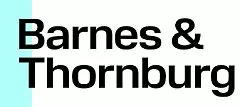- within Intellectual Property topic(s)
- in United States
- with readers working within the Pharmaceuticals & BioTech industries
- within Intellectual Property, Cannabis & Hemp and Privacy topic(s)
Sen. Thom Tillis, Chair of the Senate Judiciary Subcommittee on Intellectual Property for the 119th Congress, said that one of his top priorities is to advance the Patent Eligibility Restoration Act (PERA) at a subcommittee hearing on Oct. 8, 2025.
Tillis and other proponents — including PERA co-sponsors Sen. Mazie Hirono and Sen. Chris Coons, and former U.S. Patent and Trademark Office (USPTO) Directors David Kappos and Andrei Iancu — criticized the impact of recent U.S. Supreme Court decisions on patent eligibility under § 101. "If we don't address this, the U.S. cedes its title as a global leader in intellectual property rights. We can't let that happen," warned Sen. Tillis.
PERA aims to clarify which inventions are patentable by overruling "judicial exceptions" established by the courts and narrowing the categories through statute, specifically excluding mathematical formulas, mental processes, and naturally occurring substances unless modified by human intervention.
Iancu provided context for the confusion resulting from the last 20 years of Supreme Court § 101 jurisprudence, describing the difficulties faced by lower courts (with splits at the U.S. Court of Appeals for the Federal Circuit as the primary example), the USPTO and practitioners:
"The technologies that power today's economy were unimaginable back then [i.e., in the 1790s when the categories for patentable subject matter were written into the Patent Act]. As a result, courts and agencies have struggled to map 18th century text onto 21st century innovation, resulting in a confusing, contradicting, and ultimately innovation-destroying patchwork of decisions and exclusions that Congress never enacted."
The subcommittee members and former USPTO directors expressed consensus that the provisions of PERA — combined with the patentability requirements under §§ 102, 103 and 112 — address concerns about potentially exclusionary patent rights covering inventions that are anticipated or obvious, inadequately described, overly broad, indefinite or non-enabled.
Kappos noted, "[w]eak or over-broad patents would still be rejected, but for the right reasons, not through an unpredictable, distorted Section 101. Kappos further clarified that the pricing of medical diagnostics and the patent eligibility of medical diagnostics are "totally different categories," stating, "The diagnostic that does not exist because the incentive [patent eligibility] was not there might as well be priced at infinity."
Key provisions in PERA specify that mathematical formulas, purely mental processes, unmodified genes and natural materials would remain patent ineligible while altered versions could be, while economic, financial, business, social, cultural or artistic processes would also be excluded.
The content of this article is intended to provide a general guide to the subject matter. Specialist advice should be sought about your specific circumstances.


